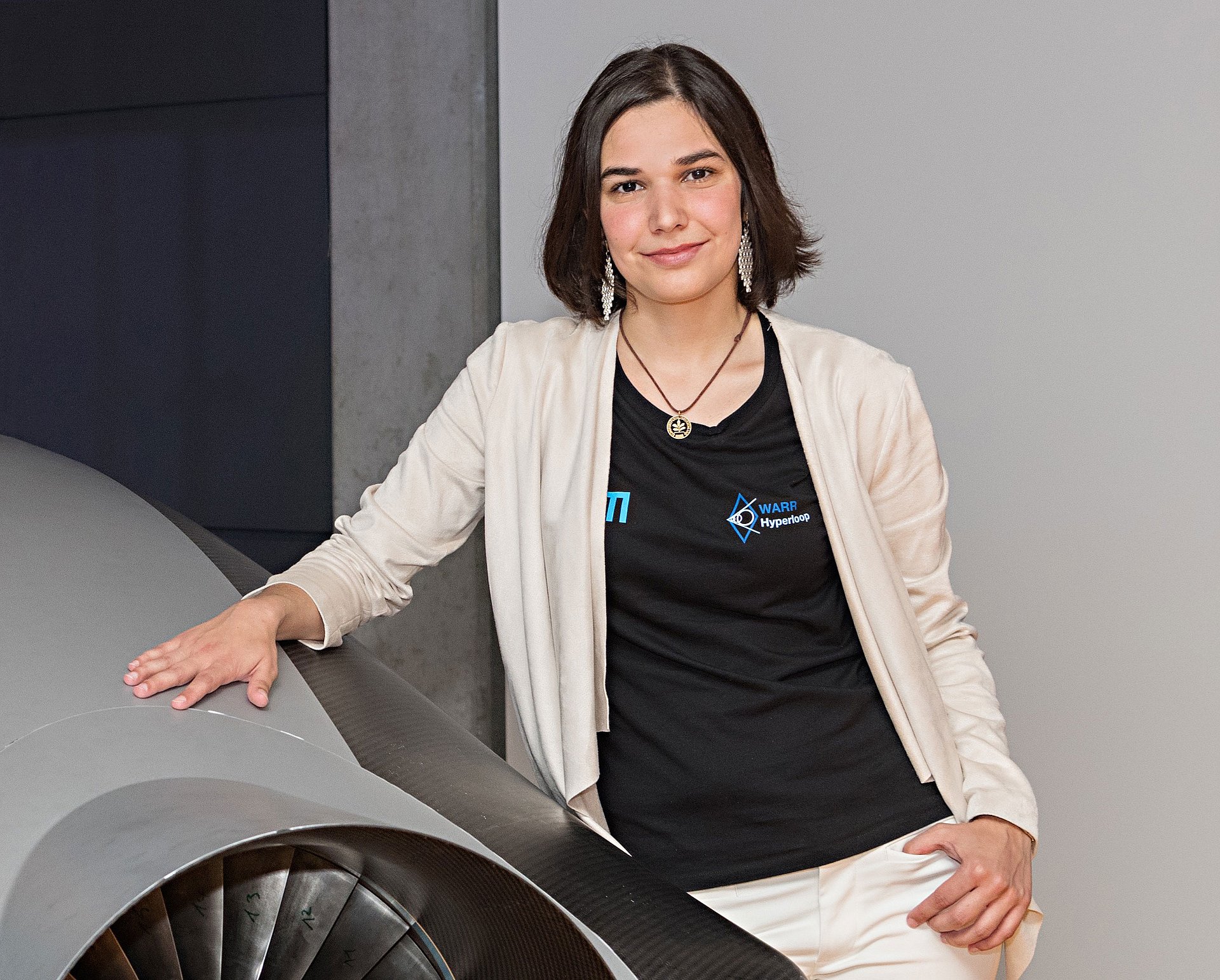Mariana Avezum leads the “Hyperloop”-team:
Things that make a difference

“Hyperloop” – an idea by Elon Musk, Head of the SpaceX Company – is supposed to be able to transport passengers and goods to their destination in a kind of air-cushioned capsule, traveling at the speed of sound (1200 kilometers per hour). “When I first heard of Musk’s idea, I was thrilled,” says Mariana Avezum, who was born and raised in São Paulo (Brazil). The Master’s student wanted to take part in the Hyperloop Design Contest (initiated by SpaceX), and she immediately found seven companions at the Chair of Aerospace Engineering.
A blue shimmering shell of carbon
Meanwhile, the team has grown to 36 students. As the first phase of the design competition was completed successfully, they will participate in the finals – and this means “Show us what you can do: build a prototype!”
At the beginning of July – after several design revisions, countless hours of work, support from the WARR (a scientific working group focusing on rocket science and space flight) and thanks to material and monetary donations from sponsors – the great moment had come: the team presented the “Hyperloop made by TUM” to the public. It is a cigar-shaped, single-seated cabin with a blue shimmering shell of carbon.
Originally, Mariana Avezum had started to study Business Administration. After two semesters, however, she knew that this just wasn’t her “kind of thing”, which is why she tried Computer Science – a decision she never regretted, “not even for a second”. In the scope of the Hyperloop-project, the 26-year-old does the project management. She is glad that she is able to manage an engineering project: She has learned a lot regarding the technical aspects – and everyone involved can now comprehend what all the theory is good for.
The finals will now take place in autumn
In addition to the time the student of Computer Science has to reserve for her studies, she invest about 40 hours a week for the Hyperloop project. She wants to “be involved with things that make a difference”. Thus, she even gave up her student job. Her experiences in the scope of this “hardware”-project will be valuable to her, as she is planning to start her own high-tech company.
The next step, however, is the testing of the Hyperloop’s individual subsystems in order to be well-prepared for the finals. According to SpaceX, the finals – which were originally scheduled for August – will now take place in autumn. On the one hand, Mariana is quite happy that the team will have more time for the tests. On the other hand, the change of date collides with her plans to start working on her Master’s thesis in September. Somehow, she will find a solution – if necessary, she would even consider skipping this year’s visit to her family in Brazil.
(Evdoxia Tsakiridou)